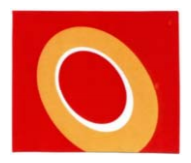In a recent Court of Justice of the European Union (CJEU) ruling, based on a referral from the Stockholm Court of Appeal, the CJEU considered whether the distinctiveness of a sign that is to be applied to specific services should be assessed with regard to what is customary in the relevant sector. A full copy of the decision can be found here.
The Court clarified that, in the context of trade marks for services, the assessment of a sign’s distinctiveness should not always involve an assessment of norms and/or customs of the sector.
Background
In November 2016, Östgötatrafiken, a Swedish transportation company applied for trade marks described as “position marks” for various services produced by means of vehicles and transport. The marks would consist of coloured ellipses of different sizes and placed into certain positions on buses and trains (see below for a few examples of the marks that were filed). Importantly, the position marks are affixed in a particular way to buses and trains used to provide transport services, but the shape of those vehicles were not the subject of the trade mark applications.


The Swedish Patent and Registration Office rejected the applications on the basis that the signs in question were decorative and therefore did not distinguish the services covered by the applications.
The Applicant appealed the decision, and the Stockholm Court of Appeal referred the case to the CJEU for a preliminary ruling.
Legal Analysis
This case concerned a trade mark application where the sign would be fixed in a specific manner to a larger part of the goods used to provide the services (in this case transportation vehicles). A trade mark must be distinctive, but the court noted that the distinctive character of the sign could not be assessed without taking into account the perception of the relevant public of the affixing of that sign to the goods.
The goods used to provide the service (for example the buses) were not the subject of the trade mark application, but the as relevant public only sees the signs in question as being attached to them, this was a consideration to take into account.
The court clarified that “it is not necessary to examine whether the signs for which registration as a trade mark is sought depart significantly from the norm or customs of the economic sector concerned.”
Therefore the referring court would need to determine whether the colour combinations applied to the transport vehicles enable the average consumer to tell different transport services apart.
Conclusion
The signs at issue could not be dissociated from the shape or packaging of the goods. They don’t represent the layout of a physical space in which services are provided (as was found to be the case with the interior of an Apple store). Therefore, the usual criterion for assessment of whether there is a significant departure from the norm or customs of the economic sector, which applies where the sign consists of the shape of the product for which registration as a trade mark is sought, does not always apply.
Now the Stockholm Court of Appeal will reassess the distinctiveness of Östgötatrafiken’s signs in light of the CJEU’s ruling.




 />i
/>i

